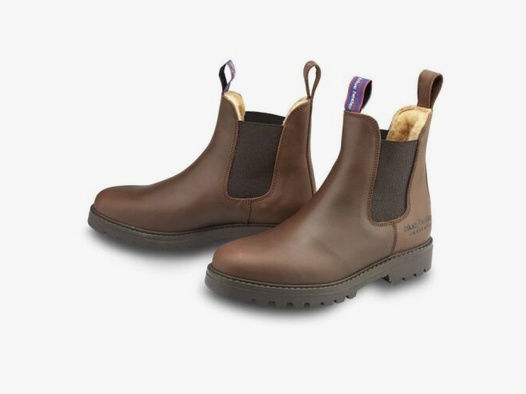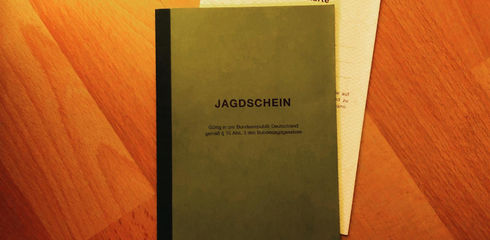The second season of "7 vs. Wild" finally started at the beginning of November. This time the challenge takes place on a tropical island and four of the seven participants have decided to take a machete with them. And that, of course, raises some questions.
So in this article we take a closer look at the machete. Is it a weapon? Is there an age restriction? And what about carrying it in public? As always, the answers refer only to the German weapons law and are therefore only valid in Germany - in Sweden or on a tropical island, of course, other laws apply.
Legal classification of the machete
First of all, it must be clarified whether the machete falls under the German weapons law at all. We can find a definition for the term weapons in the first paragraph of the Weapons Act. According to this, weapons are firearms or objects equivalent to them - neither of which certainly applies here - and the law names two categories of portable objects.
Portable object according to § 1 para. 2 No. 2a WaffG?
On the one hand, these are the portable objects which, by their nature, are intended to eliminate or reduce the ability of people to attack or defend themselves, especially cutting and thrusting weapons. // § 1 para. 2 no. 2a WaffG
And here there is often great confusion, because in principle you could use just about any object as a weapon. But exactly this is not the point. The decisive factor is whether the objects are also intended to be used as weapons. This is also referred to as the "manufacturer's purpose". A good example is the dagger. It is pointed, ground on both sides and often has a kind of hand guard, so that even when stabbing, one does not reach into the blade. This object was therefore designed from the outset to be an ideal stabbing weapon.
A machete, on the other hand, was designed as a tool. The blade is very strong, heavy and long, making it particularly good for chopping. It is also called a bushwhacker and that actually describes it quite well. A useful tool for clearing a path, especially in the forest or jungle.
Portable object according to § 1 Abs. 2 Nr. 2b WaffG?
However, there remains the second category: portable objects which, without being intended for that purpose, are suitable, in particular because of their nature, handling or mode of action, to eliminate or reduce the ability of people to attack or defend themselves, and which are mentioned in this law. // § 1 para. 2 no. 2b WaffG
This covers items that are basically not weapons, but can be used as weapons. However, they must also be mentioned in the law.
The first part of this definition applies of course to machetes. Their nature ensures that they can be used as weapons. But as already described - the second part of the definition must also be fulfilled. And the Weapons Act only mentions: switchblades, drop knives, fist knives and butterfly knives. These were originally simple utility knives, but the legislator made them into weapons in the sense of the Weapons Act.
Since the machete does not appear here, we can now state: the machete is not a weapon and the Weapons Act does not apply for the time being (with the exception of § 42a WaffG).
Age restriction as well as acquisition and possession
Since the machete is not a weapon in the sense of the Weapons Act, there is also no age restriction resulting from the law and even young people are allowed to buy such a bush knife. Of course, it is possible that individual stores allow the sale only from 18 years, but then this provision does not arise from the Weapons Act. One can therefore briefly and succinctly state: Acquisition and possession of machetes are completely free.
Carrying a machete in public
But now we come to the leading. As I said, the Weapons Act does not apply in principle, with the exception of § 42a WaffG. Because that deals not only with weapons, but also with certain portable objects, including fixed knives with a blade length over 12 cm.
Now, of course, it depends on the particular machete, but you can probably assume that most machetes have a blade that is over 12 cm long. And thus, these bush knives are generally not allowed to be carried in public.
Again, there are exceptions. Most of you are probably already aware of them, so I will only go into two specifics here. Fritz Meinecke and certainly other great YouTubers often already refer to the first exception, because they use the knives for "photo, film and television shoots".
According to prevailing opinion, however, this requires a certain degree of professionalism. This will certainly be true for most YouTubers, but it also means that not everyone can immediately invoke this exception. So if you walk through the city center armed with your machete in order to take a photo for Instagram with your smartphone, then you can certainly assume that this is a misdemeanor. So it also depends on the overall context.
The second exception is somewhat easier for most people: carrying the objects, provided there is a legitimate interest. And this in turn is already assumed if the carrying of the objects takes place in connection with the exercise of the profession or serves the customs, the sport or a generally recognized purpose. § 42a para. 3 WaffG
Again, of course, it depends on the context. If one wants to refer to the hobby Bushcraft and Survival, then one should better not run around with the machete in the station building. In a forest or on a meadow, however, this exception would be quite conceivable.
The General Administrative Regulation to the Weapons Act says the following:
"The exception ensures that carrying useful utility knives for socially-appropriate purposes (e.g., picnicking, mountaineering, gardening, rescue, customary use, hunting and fishing) will continue to be unobjectionable."
Summary
So very briefly summarized: the machete is not a weapon, the Weapons Act therefore also provides no age restriction, you do not need a separate authorization for the acquisition and possession, but when driving you should turn on common sense and observe § 42a WaffG.
More information about machetes and of course other fixed knives can be found on my YouTube channel "Kwannick - Waffengesetz und Co".
Disclaimer:
The excerpts from the Weapons Act are taken from the currently valid version of 01.09.2020. The author of this article assumes no responsibility for the timeliness, accuracy and completeness of the information provided.






























